Home>Garden Essentials>When To Plant Pumpkin Seeds
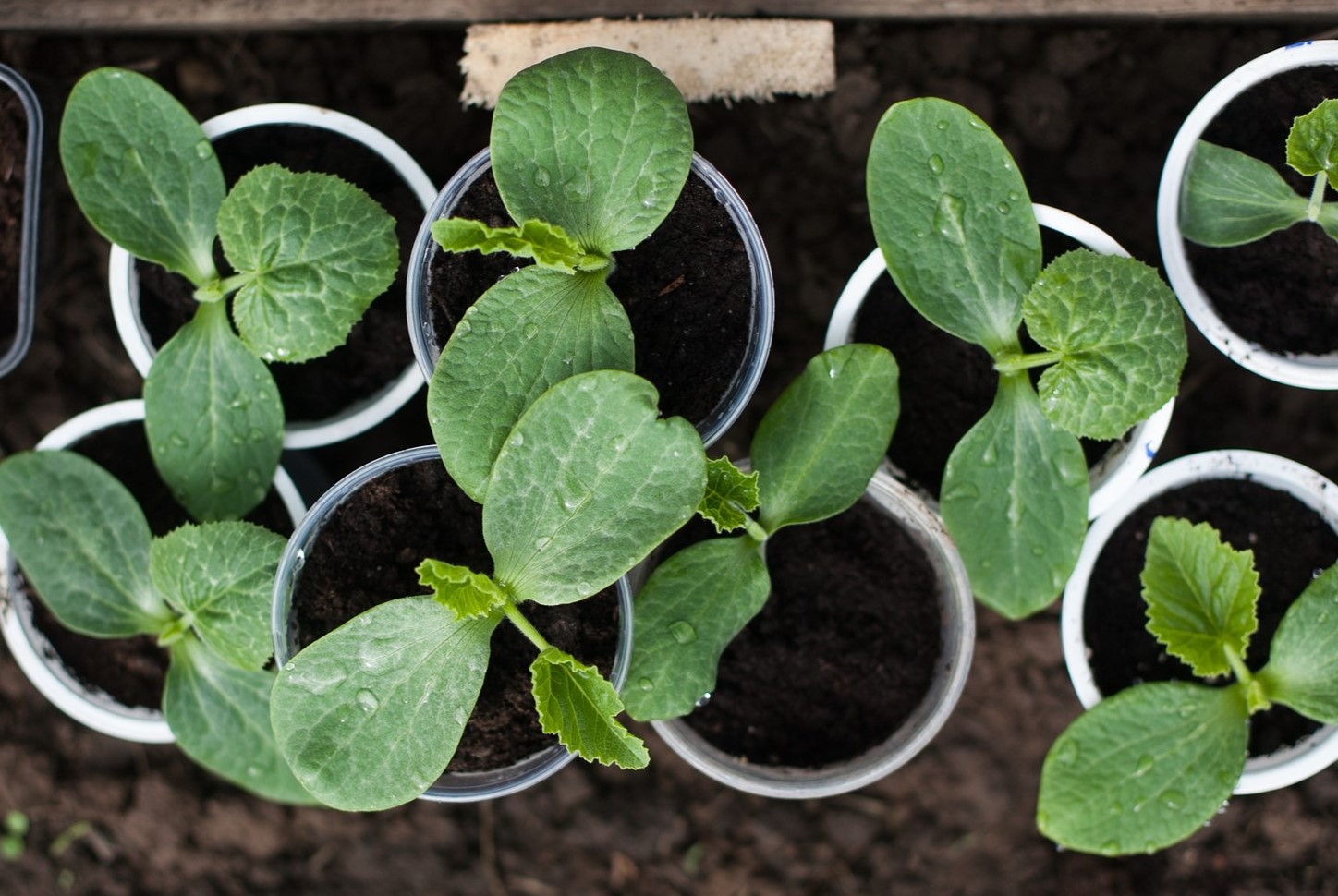

Garden Essentials
When To Plant Pumpkin Seeds
Modified: April 22, 2024
Discover the best time to plant pumpkin seeds in your garden and ensure a bountiful harvest. Expert tips and advice for optimum planting.
(Many of the links in this article redirect to a specific reviewed product. Your purchase of these products through affiliate links helps to generate commission for Storables.com, at no extra cost. Learn more)
Introduction
Welcome to the world of gardening and the exciting journey of planting pumpkin seeds! Whether you are a seasoned gardener or a beginner looking to explore the joys of growing your own pumpkins, this comprehensive guide will provide you with the knowledge and tips you need to successfully plant and nurture pumpkin seeds.
Pumpkins are not only a favorite fall decoration, but they also offer a wealth of culinary possibilities. From pumpkin pies to soups and roasted seeds, the versatility of this humble gourd is simply remarkable. To enjoy the bountiful harvest of pumpkins, it’s essential to understand the process of planting and caring for pumpkin seeds.
But before we get into the details, let’s take a moment to appreciate the seeds themselves. Pumpkin seeds are not just tiny specks; they are powerhouses packed with nutrients and potential. These seeds are a rich source of protein, fiber, and healthy fats. They contain essential minerals like iron, magnesium, and zinc, as well as vitamin E, which is a potent antioxidant.
When it comes to planting pumpkin seeds, there are a few factors to consider to ensure success. First, you need to select the right variety of pumpkin. There are numerous types, including traditional orange pumpkins, as well as white, green, or even striped varieties. Consider the size and flavor you desire, as well as the space available in your garden.
The climate and weather conditions of your region also play a crucial role, as pumpkins thrive in warm temperatures and require a long growing season. Additionally, you’ll need to assess the soil composition and fertility, as well as the amount of sunlight and water your garden receives.
Timing is everything when it comes to planting pumpkin seeds. While they can withstand some variations in temperature, it’s important to plant them when the soil has warmed up and the danger of frost has passed. This will give your seeds the best chance of germinating and growing into healthy pumpkin plants.
Now that we have a general understanding of the factors involved in planting pumpkin seeds, let’s dive into the details. In the next sections, we will discuss the best time to plant pumpkin seeds, the step-by-step process of planting them, and how to care for the pumpkin plants throughout the growing season. We will also explore the exciting tradition of harvesting pumpkin seeds and enjoying the fruits of your labor.
So, grab your gardening tools, put on your gardening gloves, and get ready to embark on this rewarding journey of planting pumpkin seeds. With a little patience, knowledge, and care, you’ll soon be able to proudly harvest your very own pumpkins and savor the taste of autumn in your home.
Key Takeaways:
- Plant pumpkin seeds in late spring or early summer after the danger of frost has passed and the soil has warmed up for optimal germination and healthy plant growth.
- Provide proper care for pumpkin seeds by ensuring consistent moisture, fertilizing as needed, controlling pests and diseases, and harvesting mature pumpkins for seeds or culinary use.
Read more: When To Plant Pumpkins Seeds
Understanding Pumpkin Seeds
Before you dive into planting pumpkin seeds, it’s important to understand the anatomy of a pumpkin seed and how it plays a crucial role in the growth and development of the plant.
Pumpkin seeds, also known as pepitas, are the edible seeds found inside the fruit. They have a hard outer shell that protects the delicate inner embryo. This embryo contains all the genetic information necessary for the seed to germinate and grow into a healthy pumpkin plant.
When it comes to selecting pumpkin seeds for planting, it’s best to choose seeds from mature ripe pumpkins. Look for plump and healthy seeds that are free from any signs of mold or damage. You can also purchase pumpkin seeds from reputable nurseries or seed catalogs.
Pumpkin seeds come in various shapes, sizes, and colors, depending on the variety of pumpkin. Some seeds are flat and oval-shaped, while others are more rounded or even asymmetrical. The color of the seeds can range from white to dark brown or even black.
Each pumpkin seed is packed with the potential to grow into a new pumpkin plant. Inside the hard shell, the embryo lies dormant until the right conditions for germination are met. These conditions include moisture, warmth, and proper soil conditions.
It’s important to note that not all pumpkin seeds are meant for planting. Some seeds may have been specifically bred for culinary purposes, such as roasting or snacking. These seeds may not have the genetic characteristics required for successful plant growth. Therefore, it’s best to choose seeds specifically labeled as suitable for planting.
In addition to their potential for growth, pumpkin seeds also offer numerous health benefits. They are a rich source of dietary fiber, which aids in digestion and promotes heart health. The seeds are also packed with essential minerals like magnesium, iron, and zinc, which contribute to overall well-being.
Pumpkin seeds are versatile and can be enjoyed in various ways. You can roast them for a delicious snack, add them to salads or granola, or use them as a nutritious topping for soups and stews. By planting pumpkin seeds, you not only have the opportunity to grow your own pumpkins but also cultivate a healthy and delicious ingredient for your recipes.
Now that we have delved into the world of pumpkin seeds and their unique characteristics, we can move on to the next step: understanding the factors to consider before planting pumpkin seeds. So, let’s explore these essential considerations to ensure a successful pumpkin growing experience.
Factors to Consider Before Planting Pumpkin Seeds
Before you start planting pumpkin seeds, it’s important to consider several factors that can significantly impact the success of your harvest. By taking these factors into account, you can create the optimal conditions for your pumpkin plants to thrive:
- Climate and Growing Season: Pumpkins thrive in warm temperatures and require a long growing season. They need plenty of sunlight and daily temperatures between 70 to 90 degrees Fahrenheit (21 to 32 degrees Celsius) for optimal growth. If you live in a region with a short growing season or cool climate, consider starting your pumpkin seeds indoors or selecting varieties with a shorter maturation period.
- Soil Conditions: Pumpkins prefer well-draining soil that is rich in organic matter. Before planting, test your soil to ensure it has a pH level between 6.0 and 7.5, which is slightly acidic to neutral. If your soil is heavy clay or sandy, amend it with compost or well-rotted manure to improve its texture and fertility.
- Space Availability: Pumpkins are notorious for their sprawling vines, so make sure you have enough space in your garden to accommodate their growth. Each pumpkin vine can spread several feet, so plan for adequate spacing between plants. If space is limited, consider growing pumpkins in containers or utilizing vertical gardening techniques to maximize space.
- Watering: Pumpkins require consistent moisture throughout the growing season. Adequate watering is crucial, especially during flowering and fruit development. Aim to provide about 1 inch (2.5 cm) of water per week, either through rainfall or irrigation. Consider using soaker hoses or drip irrigation to water directly at the base of the plants and avoid wetting the foliage, which can lead to fungal diseases.
- Pollination: Pumpkins are typically pollinated by bees and other insects. To ensure successful pollination, it’s essential to provide a pollinator-friendly environment. Plant flowering companion plants nearby, such as marigold, borage, or bee balm, to attract pollinators to your garden. You can also hand-pollinate pumpkin flowers by transferring pollen from the male flowers to the female flowers using a small paintbrush or cotton swab.
- Pest and Disease Control: Be aware of common pests and diseases that can affect pumpkin plants, such as aphids, squash bugs, and powdery mildew. Implement preventive measures like regular scouting and removal of affected leaves, practicing crop rotation, and applying organic pest control methods, such as neem oil or insecticidal soap, when necessary.
By considering these factors before planting your pumpkin seeds, you can create an optimal growing environment for your plants. Taking the time to prepare your soil, provide adequate water and sunlight, and protect your plants from pests and diseases will significantly increase your chances of a successful pumpkin harvest.
Now that you are equipped with the knowledge of what factors to consider, let’s move on to the best time to plant pumpkin seeds, ensuring your plants have the best start possible.
Best Time to Plant Pumpkin Seeds
Timing is crucial when it comes to planting pumpkin seeds. To ensure optimal germination and growth, it’s important to plant your seeds at the right time. The best time to plant pumpkin seeds depends on several factors, including your location and the specific variety of pumpkin you are planning to grow. Here are some guidelines to help you determine the best time to plant:
1. Last Frost Date: Before planting your pumpkin seeds, it’s important to know the date of the last expected frost in your area. Pumpkins are sensitive to frost, so planting them too early can result in seedling death. Wait until after the danger of frost has passed to ensure that your young plants won’t be harmed.
2. Soil Temperature: Pumpkin seeds require warm soil to germinate successfully. The optimal soil temperature for pumpkin seed germination is around 70 to 85 degrees Fahrenheit (21 to 29 degrees Celsius). Use a soil thermometer to monitor the soil temperature in your garden. Wait until the soil has warmed up to these temperatures before planting your seeds.
3. Growing Season: Consider the length of your growing season when determining the best time to plant pumpkin seeds. Different pumpkin varieties have different maturation periods, ranging from 75 to 120 days. Count backward from the expected first frost date in your area to determine the ideal planting time for your chosen pumpkin variety.
4. Regional Climate: Regional climate variations can also influence the best time to plant pumpkin seeds. In cooler climates, it’s advisable to start seeds indoors several weeks before the last frost date to give the plants a head start. In warmer climates, you may have a longer growing season, allowing you to plant seeds directly in the soil.
As a general guideline, most gardeners plant pumpkin seeds in late spring or early summer, once all risk of frost has passed and the soil has warmed up. This is typically around May or June in many regions. By planting during this time, you give your pumpkin seeds the best chance to germinate and establish strong, healthy plants.
In addition to planting in the proper season, it’s important to provide the right conditions for your pumpkin seeds to thrive. Prepare the soil by incorporating organic matter, such as compost or aged manure, to improve fertility and drainage. Sow the seeds at a depth of about 1 inch (2.5 cm) and space them according to the guidelines provided on the seed packet.
By following these guidelines and taking into consideration your local climate and growing season, you can determine the best time to plant your pumpkin seeds. This will set the stage for successful germination and healthy pumpkin plants that will reward you with a bountiful harvest.
Next, let’s move on to the step-by-step process of planting pumpkin seeds, so you can get your hands in the soil and start your pumpkin-growing adventure!
Plant pumpkin seeds in late spring or early summer, after the last frost date in your area. This will give them enough time to grow and mature before the first frost in the fall.
Steps to Plant Pumpkin Seeds
Planting pumpkin seeds is an exciting and rewarding process that allows you to witness the growth and transformation of these delightful gourds. To ensure successful germination and healthy plant development, follow these step-by-step instructions:
1. Choose a Location: Select a sunny location in your garden that receives at least 6 to 8 hours of direct sunlight per day. Pumpkins need plenty of sunlight to grow and thrive. Ensure the soil in that area is well-draining and rich in organic matter.
2. Prepare the Soil: Dig the soil to a depth of about 12 inches (30 cm) and remove any weeds or rocks. Incorporate compost or well-rotted manure to improve the soil’s fertility and texture. This will provide the necessary nutrients for your pumpkin plants.
3. Sow the Seeds: Create small mounds of soil or raised rows with a spacing of about 3 to 5 feet (1 to 1.5 meters) between each mound or row. Plant 2 to 3 pumpkin seeds per mound or every 12 to 18 inches (30 to 45 cm) in a row. Place the seeds about 1 inch (2.5 cm) deep into the soil with the pointed end facing down.
4. Water Well: After planting the seeds, water the soil thoroughly to ensure good seed-to-soil contact and to initiate the germination process. It’s important to keep the soil moist but not waterlogged during the growing season. Avoid overhead watering as it can lead to fungal diseases. Instead, water at the base of the plants or use drip irrigation.
5. Provide Support (Optional): If you’re growing large pumpkin varieties, you may want to provide support for the vines as they grow. You can use trellises, fences, or even homemade structures to keep the vines off the ground and prevent rot or pests from damaging the fruits.
6. Maintain Adequate Spacing: As the pumpkin seedlings emerge and start to grow, thin them out to leave only the healthiest and strongest plant in each mound or designated space. Crowded plants can compete for resources and hinder their growth.
7. Monitor and Care for the Plants: Regularly monitor your pumpkin plants for any signs of pests, diseases, or nutrient deficiencies. Keep the soil evenly moist, especially during flowering and fruiting stages. Apply a layer of organic mulch around the plants to conserve moisture, suppress weeds, and regulate soil temperature.
8. Fertilize as Needed: Pumpkins are heavy feeders and may benefit from additional fertilization during their growth period. Use a balanced organic fertilizer or incorporate compost into the soil around the base of the plants. Follow the package instructions for proper application rates.
9. Encourage Pollination: To ensure successful fruit set, encourage pollination by attracting bees and other pollinators to your garden with companion plants or bee-friendly habitats. You can also hand-pollinate by transferring pollen from male flowers to female flowers using a small brush or cotton swab.
10. Harvest Mature Pumpkins: Monitor your pumpkins as they grow and mature. Harvest fully mature pumpkins when the stem attached to the fruit starts to dry and the skin becomes hard. Cut the pumpkin off the vine using sharp garden shears, leaving a short stem attached.
By following these simple steps, you’ll be well on your way to successfully planting and growing pumpkin seeds. Remember to be patient and provide consistent care throughout the growing season. Soon enough, you’ll be able to enjoy the vibrant colors and delicious flavors of your homegrown pumpkins!
Now let’s explore how to care for your pumpkin seeds during the growing season to ensure their healthy development.
Read more: When To Plant Giant Pumpkin Seeds
Caring for Pumpkin Seeds During the Growing Season
Once you have planted your pumpkin seeds and they begin to germinate and grow, it’s essential to provide proper care to ensure their healthy development and maximize your chances of a bountiful harvest. Here are some essential care tips to keep in mind during the growing season:
1. Watering: Pumpkins require consistent moisture, especially during the hot summer months. Keep the soil evenly moist, but be careful not to overwater, as excessive moisture can lead to root rot. Aim to provide about 1 inch (2.5 cm) of water per week. Water at the base of the plants, avoiding wetting the foliage to minimize the risk of diseases.
2. Mulching: Apply a layer of organic mulch around the base of the plants to conserve moisture, suppress weeds, and regulate soil temperature. Mulching helps to maintain a more consistent moisture level in the soil and reduces the need for frequent watering. Use materials such as straw, wood chips, or compost as mulch.
3. Fertilizing: Pumpkins are heavy feeders and benefit from regular fertilization. Apply a balanced organic fertilizer or incorporate well-decomposed compost into the soil around the base of the plants. Follow the package instructions for proper application rates. Generally, it’s best to fertilize after the seedlings have established and again when the vines start to develop.
4. Weed Control: Keep the area around your pumpkin plants free from weeds. Weeds can compete with the pumpkins for nutrients and water, hinder their growth, and make it more challenging to harvest the mature fruits. Regularly pull or remove weeds by hand or use shallow cultivation techniques to avoid damaging the pumpkin’s shallow roots.
5. Pest Management: Monitor your pumpkin plants regularly for any signs of pests, such as aphids, squash bugs, or vine borers. Remove any affected leaves or insects by hand. Consider using natural pest control methods, such as neem oil or insecticidal soap, to prevent or control infestations. Encouraging beneficial insects, like ladybugs and praying mantises, can also help manage pest populations.
6. Disease Prevention: Pumpkins are susceptible to fungal diseases such as powdery mildew and downy mildew. To prevent these diseases, avoid overhead watering and ensure adequate air circulation around the plants. Remove any infected leaves promptly and dispose of them in the trash to prevent the spread of spores. Applying a preventive fungicide may be necessary in certain cases.
7. Providing Support: Large pumpkin varieties may require some support to keep the fruits off the ground and prevent rot or pests from damaging them. Use trellises, cages, or slings made of fabric or pantyhose to support the growing pumpkins. Carefully lift and place the pumpkins onto these supports as they grow and become heavier.
8. Pruning: While not necessary for all varieties, pruning can help control the size and shape of the pumpkin plants. Remove any excessive foliage or non-productive vines to improve air circulation and sunlight penetration. Be cautious not to remove too much foliage, as the leaves are essential for photosynthesis and fruit development.
9. Monitor Fruit Development: Keep an eye on the developing pumpkins as they grow. Remove any misshapen or damaged fruits to redirect the plant’s energy towards the healthier ones. Gently rotate the pumpkins occasionally to ensure even development and prevent flattening on one side.
10. Harvesting: Harvest your pumpkins once they reach full maturity. Check for signs such as a hard rind, deep color, and a dry, withered stem. Use a sharp knife or pruning shears to cut the pumpkins from the vines, leaving a short stem attached. Handle them carefully to avoid any bruising or damage.
By providing proper care and attention to your pumpkin plants throughout the growing season, you are giving them the best chance to thrive and produce a plentiful harvest. Remember that each pumpkin plant is unique, so adjust your care practices based on its individual needs. With a little patience and TLC, you’ll soon be rewarded with vibrant, healthy pumpkins that can be enjoyed in a variety of culinary and decorative ways.
Next, let’s explore the thrilling process of harvesting pumpkin seeds, so you can preserve and enjoy them for future use.
Harvesting Pumpkin Seeds
Harvesting pumpkin seeds is an exciting part of the pumpkin-growing journey. Not only can you enjoy the delicious flesh of the pumpkin, but you can also save the seeds for future planting or for culinary use. Follow these steps to harvest and preserve pumpkin seeds:
1. Wait for Maturity: Allow your pumpkins to fully mature on the vine before harvesting the seeds. Look for signs such as a hard rind, deep color, and a dry, withered stem. Depending on the variety, this usually occurs around 75 to 120 days after planting.
2. Cut the Pumpkin: Use a sharp knife or pruning shears to cut the mature pumpkin from the vine. Leave a short stem attached to the pumpkin, approximately 3 to 4 inches (7.6 to 10 cm) in length. Be careful not to damage the seeds while cutting.
3. Remove the Seeds: Cut or gently pry open the pumpkin to expose the inner cavity. Use a large spoon or your hands to scoop out the seeds and the surrounding fibrous pulp. Separate the seeds from the pulp as much as possible. Some slight pulp residue on the seeds is fine and will not affect their viability.
4. Clean the Seeds: Place the pumpkin seeds in a bowl of water and gently swirl them to remove any remaining pulp or debris. Skim off any floating seeds, as they may be less viable. Repeat the process a few times until the seeds are clean and free from excess pulp.
5. Dry the Seeds: Spread the cleaned pumpkin seeds in a single layer on a clean, dry surface, such as a baking sheet or paper towel. Allow the seeds to air dry thoroughly for about a week. Make sure the seeds are completely dry before storing them to prevent mold or rot.
6. Store the Seeds: Once the pumpkin seeds are dry, transfer them to an airtight container, such as a glass jar or a sealed plastic bag. Store the seeds in a cool, dry place away from direct sunlight. Label the container with the variety and date of harvesting for future reference.
7. Save for Planting: If you plan to save your pumpkin seeds for future planting, ensure they are fully mature and of good quality. Select the largest and healthiest seeds for saving, as these are more likely to produce strong, vigorous plants the following season. Avoid saving seeds from hybrid varieties, as they may not produce offspring with the same characteristics.
8. Use in the Kitchen: Pumpkin seeds are a nutritious and delicious snack. You can roast them in the oven with a sprinkle of salt, spices, or your favorite seasonings. Alternatively, add them to salads, granola, or baked goods for an extra crunch and nutritional boost.
By following these simple steps, you can successfully harvest and preserve pumpkin seeds for future planting or culinary enjoyment. Remember to enjoy the process and savor the rewards of your hard work and dedication in growing your own pumpkins.
With a little practice and experimentation, you can take full advantage of the versatility and benefits of pumpkin seeds, from planting them to enjoying them as a healthy snack or addition to your favorite recipes. Happy pumpkin seed harvesting!
As we wrap up our comprehensive guide to planting and caring for pumpkin seeds, we hope you feel inspired to embark on your own pumpkin-growing adventure. By following the guidelines and tips provided, you’ll be well on your way to a successful and rewarding harvest of delicious pumpkins.
Now, it’s time to get your hands dirty and start planting those pumpkin seeds. Happy gardening!
Conclusion
Congratulations, you have reached the end of our comprehensive guide to planting and caring for pumpkin seeds! By now, you should have a deeper understanding of the process and the factors to consider to ensure successful growth and a bountiful harvest.
Planting pumpkin seeds is a fulfilling and rewarding experience. From the moment you sow the seeds to the time you harvest the mature pumpkins, you will witness the transformation of tiny seeds into vibrant and delicious fruits. Along the way, you’ll develop a deeper connection with nature and gain a sense of satisfaction from nurturing and growing your own pumpkins.
Throughout this guide, we have covered crucial topics such as understanding pumpkin seeds, considering factors before planting, determining the best time to plant, step-by-step planting instructions, caring for pumpkin seeds during the growing season, and the exciting process of harvesting and preserving the seeds.
Remember, proper care and attention are key to successful pumpkin growth. From providing adequate sunlight, water, and nutrients to managing pests and diseases, every step plays a crucial role in ensuring healthy and productive plants.
As you embark on your pumpkin-growing journey, don’t be afraid to experiment and explore different varieties, techniques, and recipes. Gardening is a continuous learning process, and each season will bring new lessons and experiences. Enjoy the process, embrace the challenges, and celebrate the triumphs of growing your own pumpkins.
Whether you are growing pumpkins for decorative purposes, culinary delights, or simply the joy of gardening, the satisfaction of bringing these vibrant gourds to life is unparalleled. Share your pumpkin-growing adventures with friends and family, and get them excited about the wonders of gardening as well.
As the seasons change and autumn approaches, your pumpkin plants will be ready to delight you with their bold colors, unique shapes, and delicious flavors. From cozy pumpkin pies, soups, and roasted seeds to festive decorations and jack-o’-lanterns, the possibilities are endless.
So, grab your gardening tools, select your favorite pumpkin varieties, and let the fascinating journey of planting pumpkin seeds begin. Enjoy the process, nurture your plants with care, and savor the rewards of your labor as you indulge in the wonders of the pumpkin season.
Thank you for joining us on this gardening adventure. Happy planting and may your pumpkin harvest bring you joy, nourishment, and endless autumn memories!
Frequently Asked Questions about When To Plant Pumpkin Seeds
Was this page helpful?
At Storables.com, we guarantee accurate and reliable information. Our content, validated by Expert Board Contributors, is crafted following stringent Editorial Policies. We're committed to providing you with well-researched, expert-backed insights for all your informational needs.
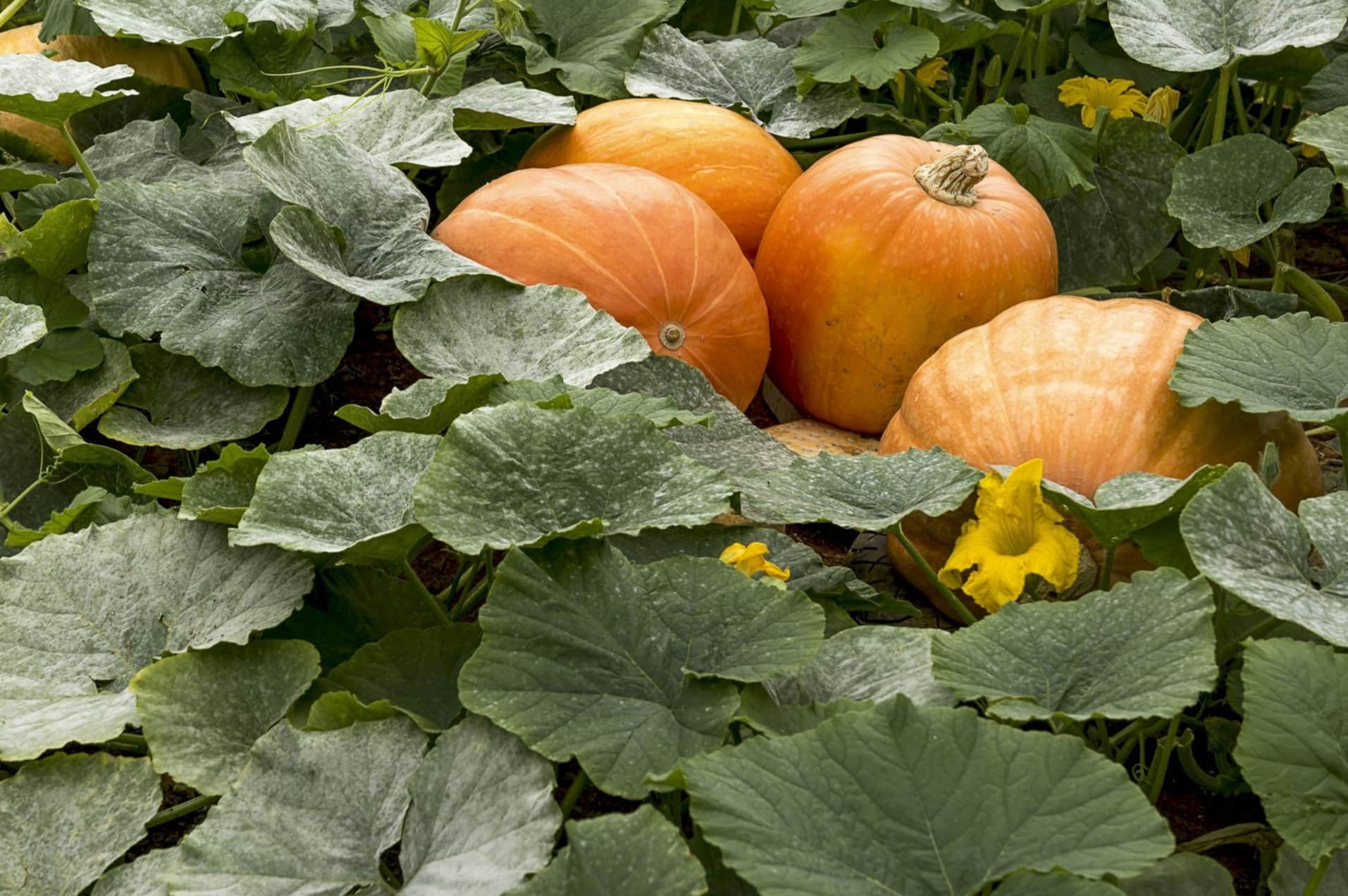
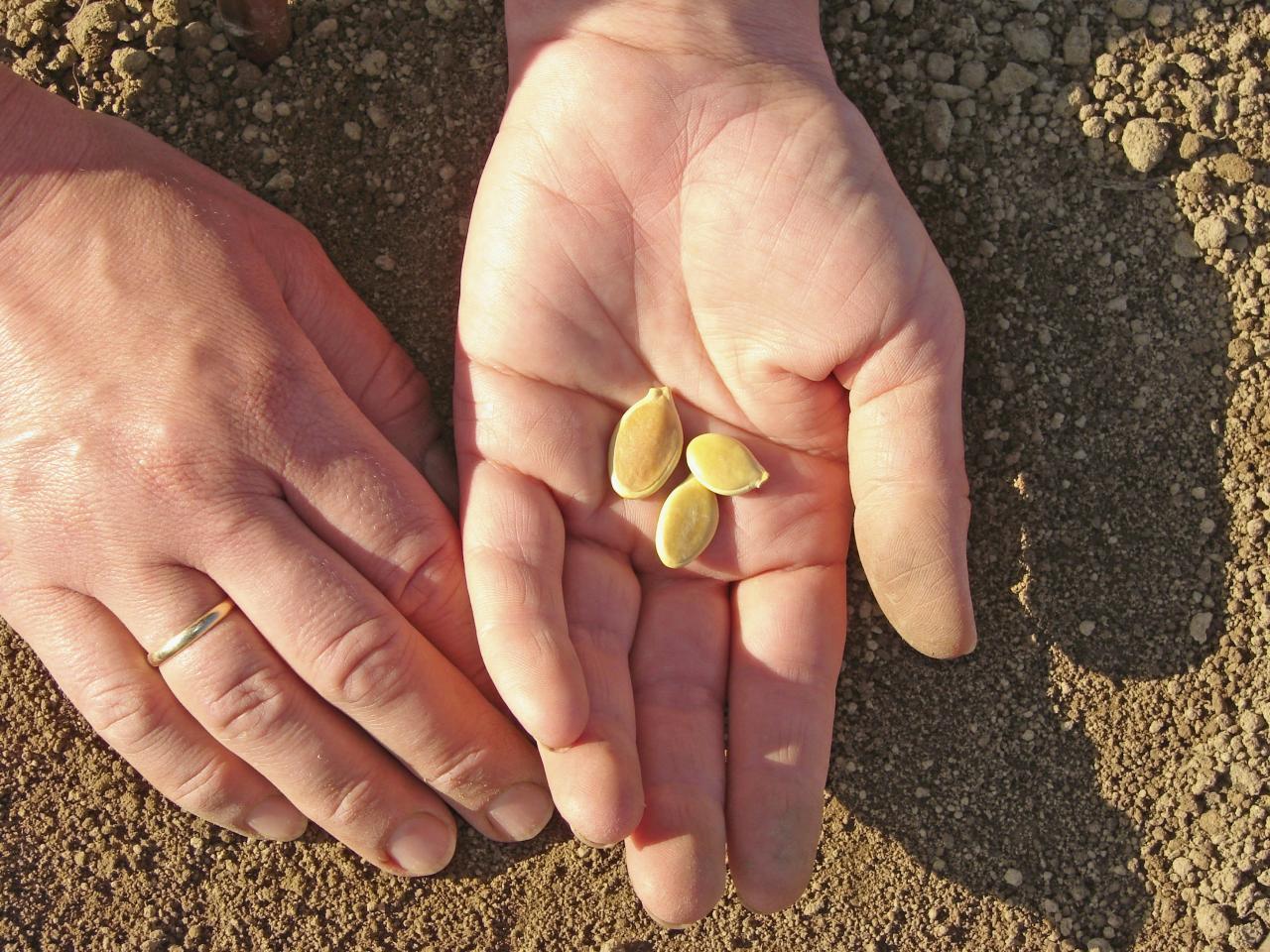
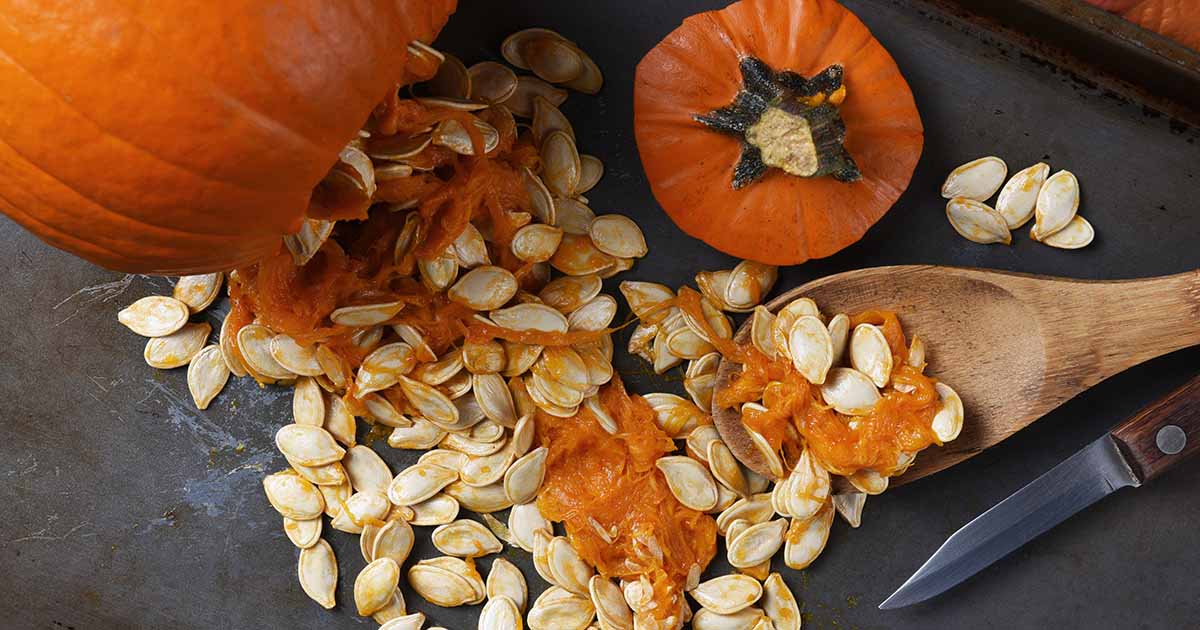
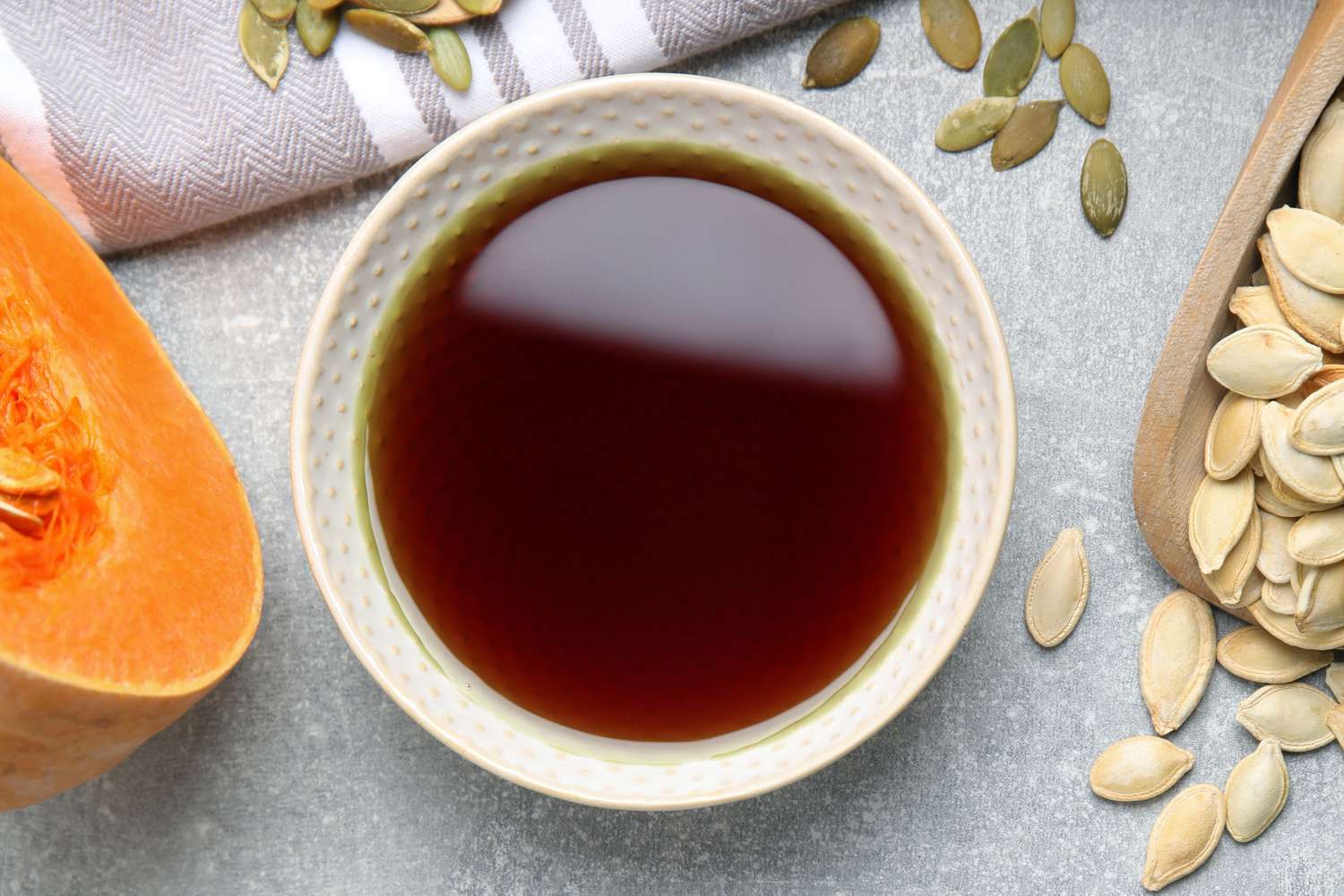
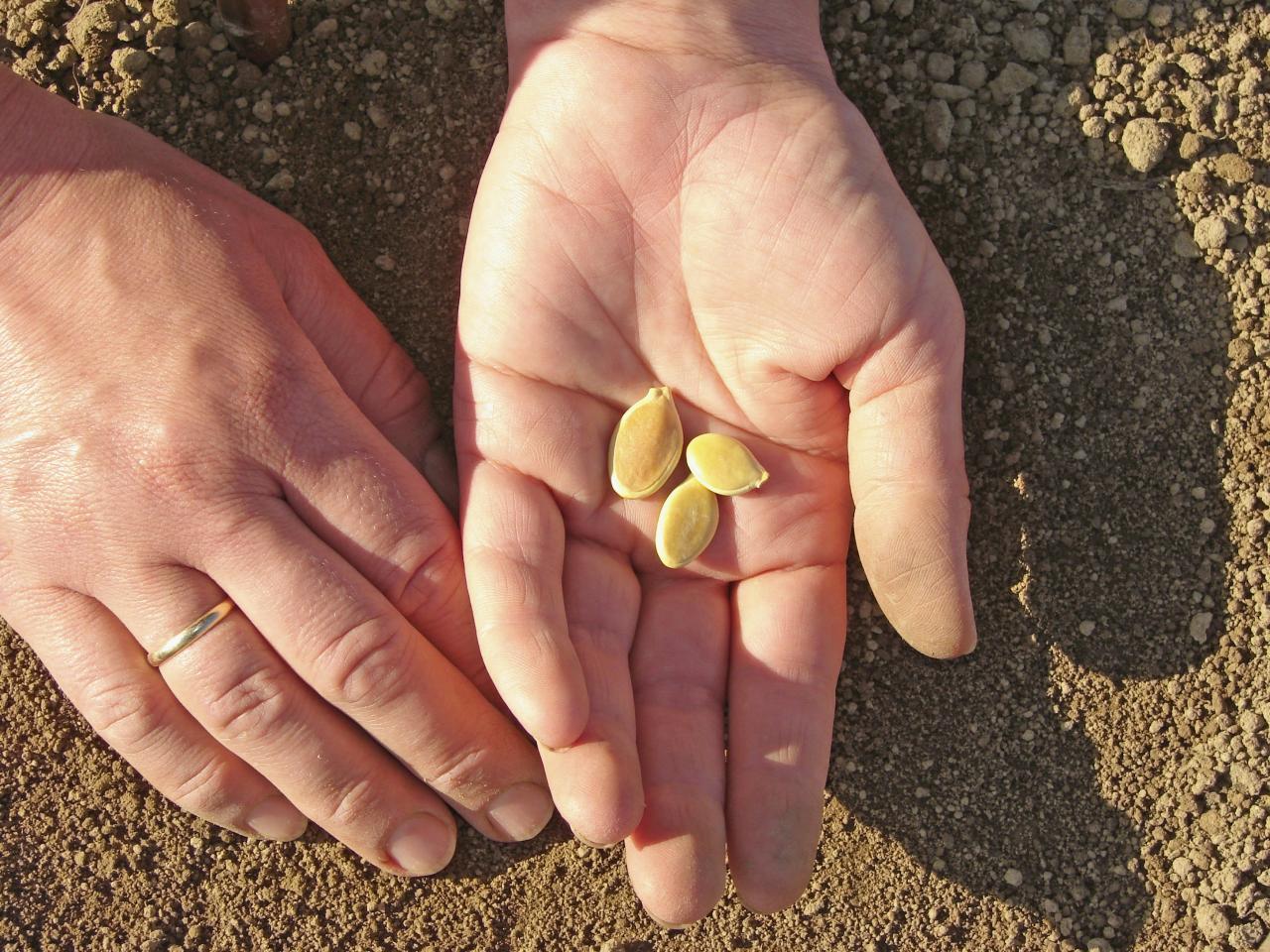










0 thoughts on “When To Plant Pumpkin Seeds”